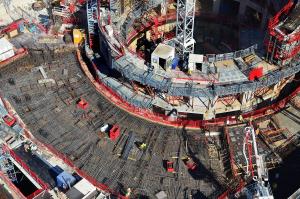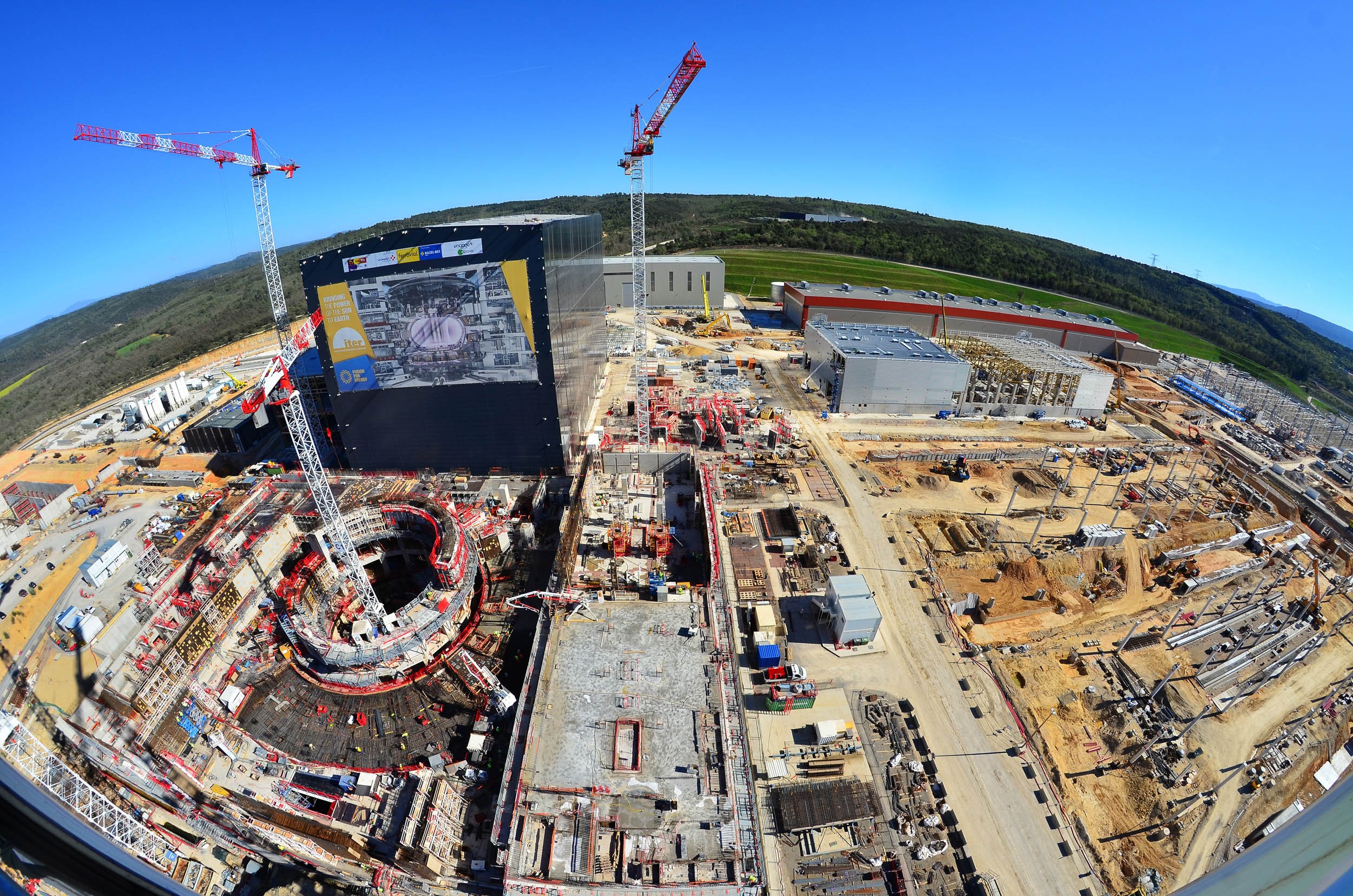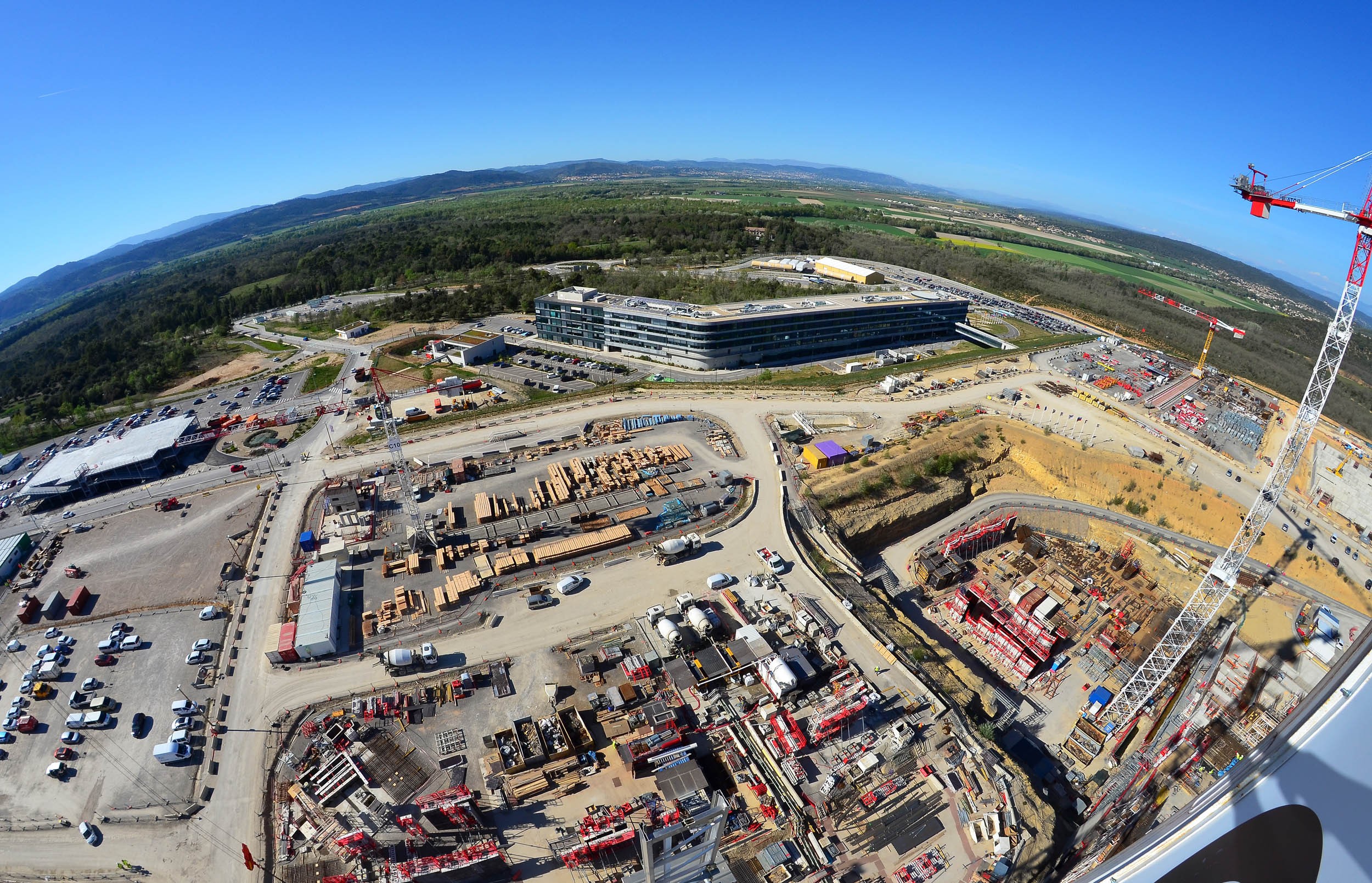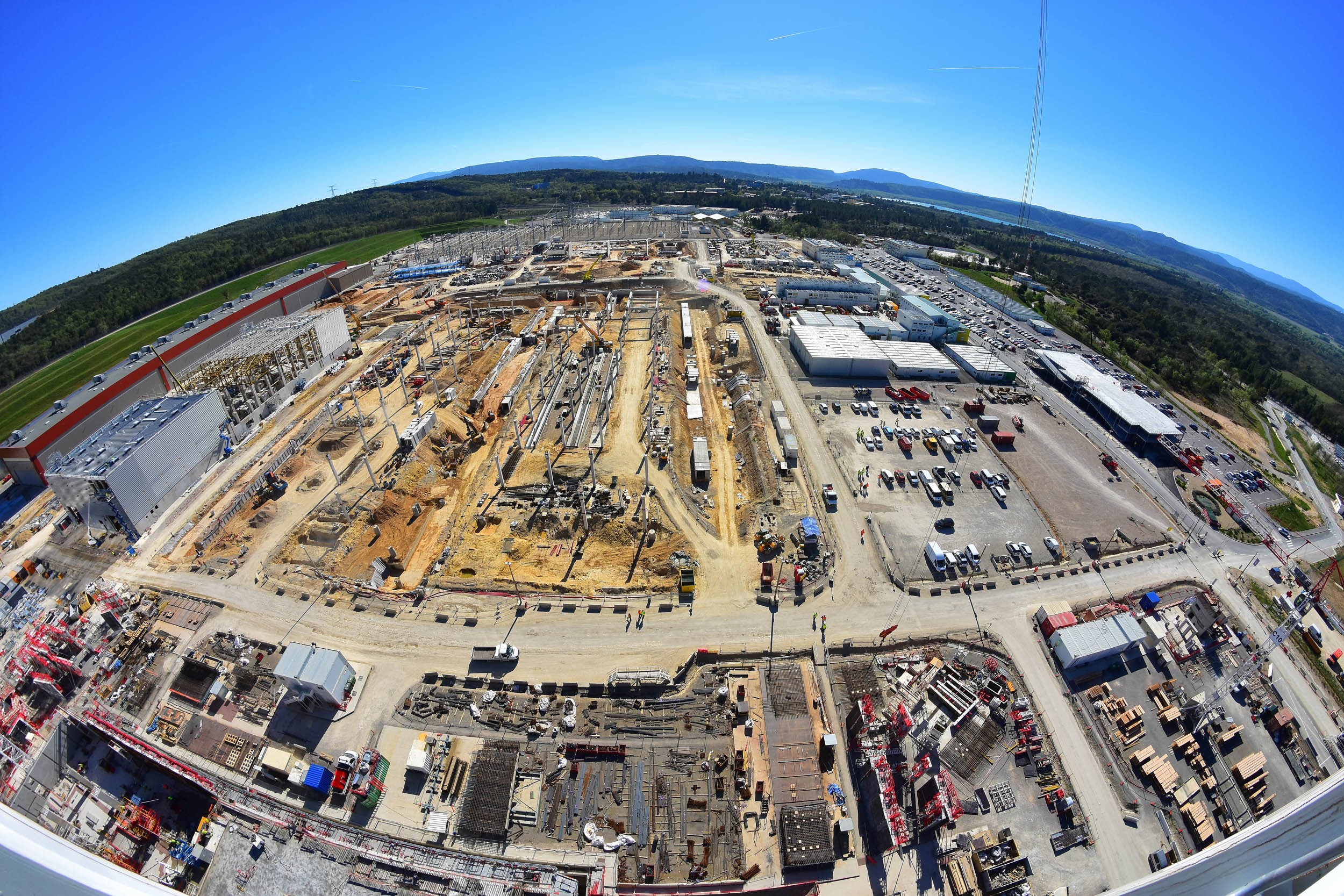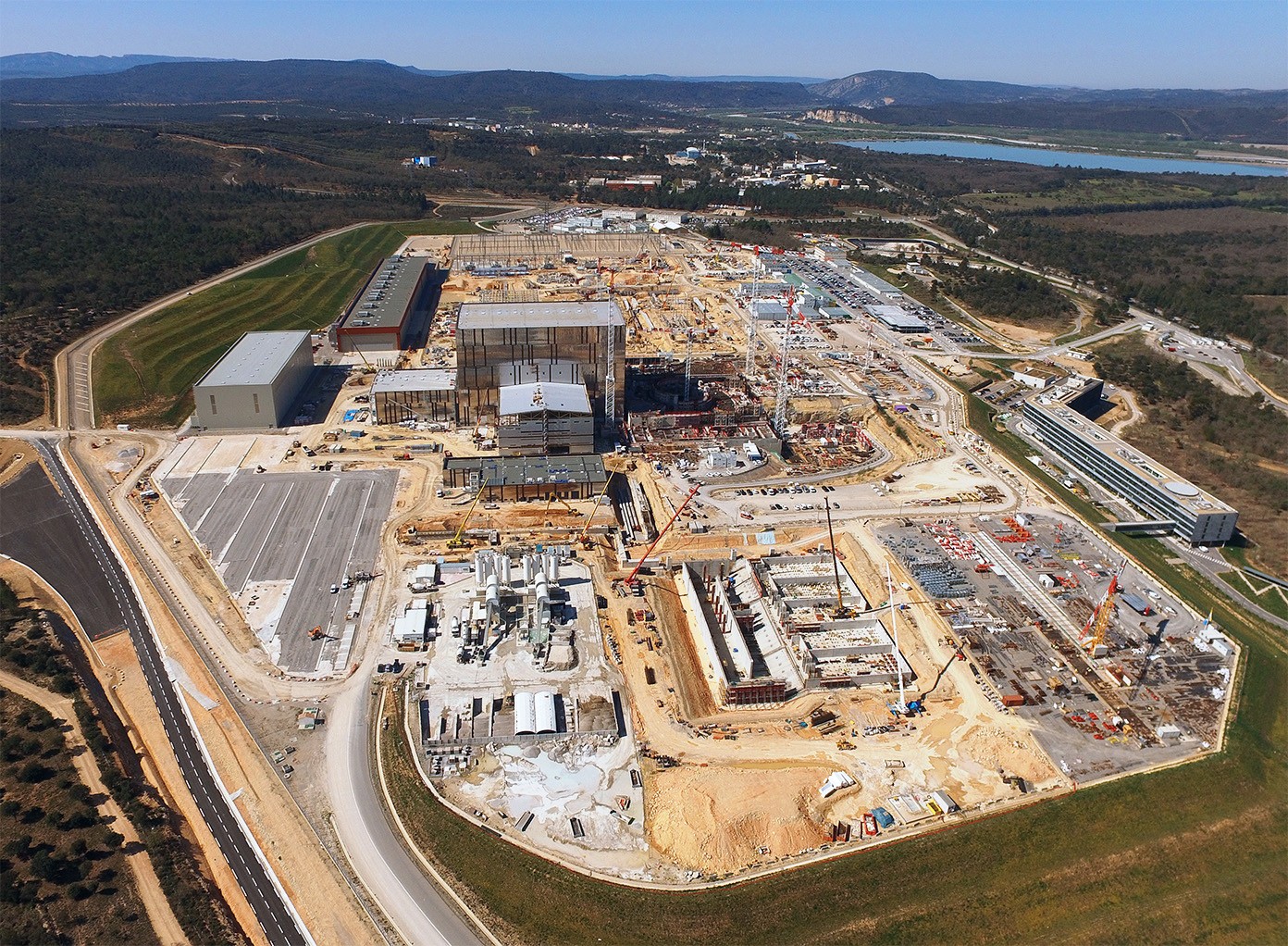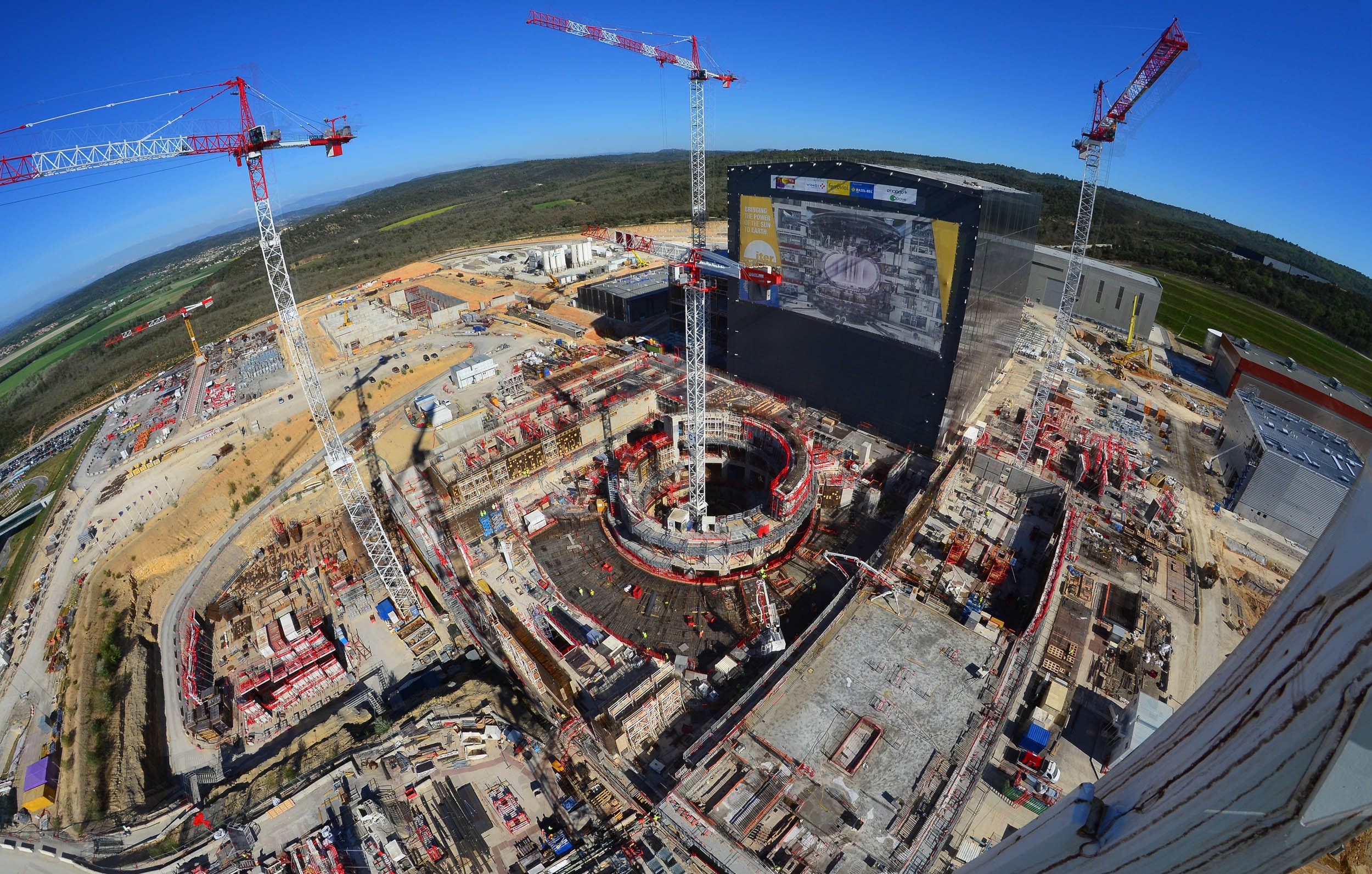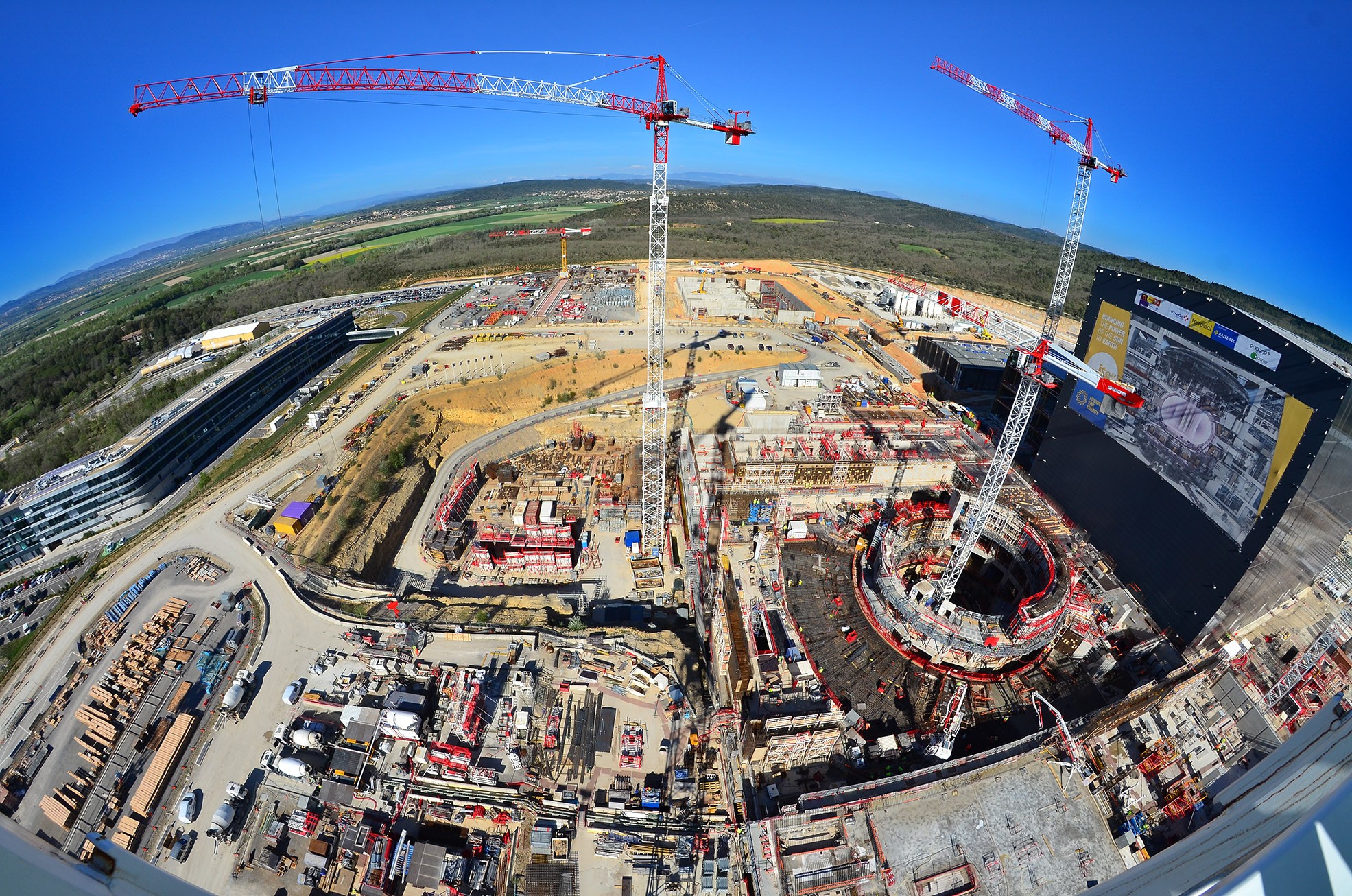A wide angle on progress
Whether captured from the top of a crane or from a drone hovering at an altitude of a few dozen metres, the ITER site is always spectacular.
After almost seven years of construction most of the elements of the ITER scientific installation are visible, albeit in various stages of completion.
Progress has been strong in the centre of the Tokamak Complex, where the bioshield now rises two storeys above the level of the platform and has become one of the most noticeable features of the worksite from overhead. Construction progress is also evident in the zones reserved for the ITER cryoplant and the cooling towers/basins.
Other milestones have been achieved that aren't so visible from the sky, however. On 30 March, one of the four transformers for steady-state electrical network was briefly connected to the French grid—opening the way for full switchyard "energization" in the coming months.
And that's not all: inside the Poloidal Field Coils Winding Facility teams are about to start on the first production winding for poloidal field coil #5; in the Radio Frequency Building 80 percent of the steel structure of has been installed and the intermediate floor slabs realized; and in the magnet power conversion area the first "top beam" was installed on columns last week.
But better see it with your own eyes in the photo gallery below ...

